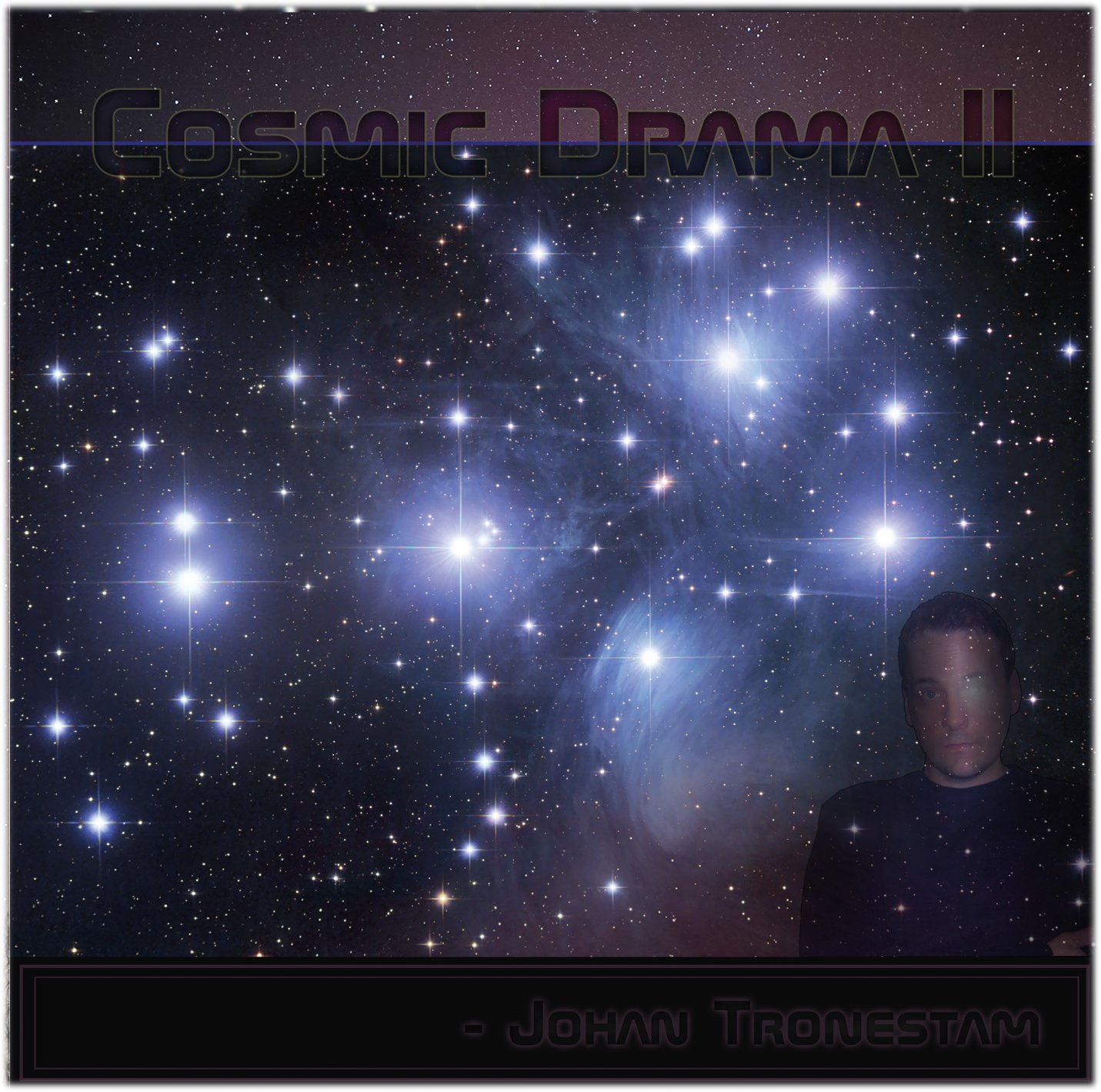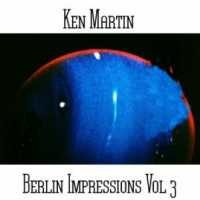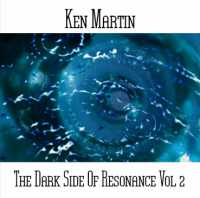Description
1 Reveals the invisible
2 Interstellar space Part II
3 The Seven Sisters
4 Inconceivable
5 Is time on our side
6 A theory of everything
7 The final Drama
Part 2 of the Cosmic Drama serie. A brilliant album album full of melodic music.





Sylvain Lupari –
It was with Cosmic Drama that Johan Tronestam’s musical adventure in the land of Groove nl began. Since then, the Swedish musician-synthesist now living in Finland has released 4 CDs, COSMIC DRAMA II is the 5th, on Ron Boots’ label. Inspired by Jean-Michel Jarre’s interstellar odes, JT always stays in his comfort zone by proposing melodious albums where airy synth solos and melancholic orchestral mists abound. The sequencer knits together creatively intertwined rhythm lines, creating driving and ambient structures, like cosmic Berlin School, which electronic percussions lead into phases that flirt between cosmic rock and more danceable electronic music (EM). In an envelope of time of almost 80 minutes, Johan proposes in this COSMIC DRAMA II an EM always with an analog flavor of the first Jarre albums. On this one, the rhythms are more moderate in a musical and atmospheric texture more melancholic here than in the first part which was realized in 2019.
Reveals the Invisible starts this album in rhythms. JT elaborates 2 rhythm lines in parallel, one that traces a gallop with dribbling effects and the other that gambols innocently. Layers of stellar mist and seraphic voices introduce a lyrical vision to this rhythmic emergence while the keyboard lays down the melancholic timbre of a melody that remains to be constructed. The synth layers start to swirl like the eye of a beacon, dropping melodious solos always imbued with nostalgia that thin lines of absent voices cover with wandering hums. Reveals the Invisible then moves into an atmospheric passage around the 7 minute mark. A heavy and lively bass line emerges about 60 seconds later, structuring an electronic flow pounded by a spasmodic and circular rhythm of the sequencer, while the synth solos that emerge have that cosmic scent of the Oxygen’s creator. What is heard on the first track of COSMIC DRAMA II can be heard throughout its 6 next chapters. The velocity of the rhythms differs slightly, but the atmospheric envelope and the musical texture are woven in the same charms. Interstellar Space Part II begins with a lunar haze from which beautiful synth solos sing. Unlike Interstellar Space, its opening is atmospheric in nature with beautiful harmonies, still tinted with spleen, that cradle a Cosmos and its sonic turbulence. The elements of the rhythm are gradually installed around the 3rd minute. The synth dominates this structure with dreamy solos, marvelously imaging a solitary hiker admiring the cosmic horizons with his soul tortured by nostalgic memories. The sequencer makes leap its jumping arpeggios into the soft moonlit airs of the synth before screwing in a solid bouncing line to which a mesh of aboriginal tom-toms and electronic percussions are grafted. The finale of Interstellar Space Part II is of the same mold as the opening of its first part that we find in Cosmic Drama. It’s a shadow of vibrational drones that opens The Seven Sisters. The synth weaves morose, borderline gloomy laments into a vision of desolation that is amplified by those Pink Floyd-flavored keyboard layers. The tone is gloomy, almost sinister, with these synth layers and waves filled with the mists of an immense sorrow. Johan Tronestam introduces a rhythmic life, some ambient rhythm, with 2 lines of the sequencer, a bit like the one in Reveals the Invisible with a slower flow and less dribbling, in an ascending Berlin School pattern. The sequencer actually moves its main rhythm structure up and down, like the slow gallop of a carousel climbing the uneven slopes of the Cosmos, in the sepulchral scents of the synth and its hazy lunar chants. The musician-synthesist from Åland subtly accelerates the cadence of his ambient rhythm which becomes slightly livelier with the arrival of the percussions around the 6th minute. From then on, the rhythm as well as the synths become inseparable in a harmonious synergy that will turn our senses upside down as soon as the synth solos inject this aura of melancholy that surrounds every bit of life on COSMIC DRAMA II.
With vibrating drones and sound effects sounding like a meteorite heard from afar, the opening of Inconceivable floats in a cosmic broth still foggy from its neurasthenic envelope. The feeling of blues flows through every pore of this rumbling opening which gradually comes alive with a rhythm delicately articulated by pulsing bass hits and a bouncing sequencer line. The rhythm is calm and undertakes a minimalist pattern under dense layers of anesthetic mist, slightly accentuating its pace with the addition of percussions. It breaks its repetitive progression around the 6th minute to begin a livelier pace under nostalgia-filled solos and a layer of saddened humming voices. After an atmospheric opening that exceeds 2 minutes, Is time on our Side starts to pulse with the beats of a sequenced bass line. At first static, its rhythm beats on the spot under nice hazy synth odes. The sequencer then activates 2 adjacent rhythm lines that diversify the rhythmic and harmonic vision. The rhythm flows with a good fluidity, like ascending-descending and coming and going, in a cosmic rock structure always very close to the interstellar territories of Jean-Michel Jarre. While infusing subtle modifications to his rhythm line, like stroboscopic filaments or sequencer impulses, Johan Tronestam throws in some beautiful dreamy solos. The rhythm develops a more spasmodic texture in its last third where a cybernetic female voice is heard through a vocoder. The opening of A Theory of Everything reminds me of the cosmic poetry that Michael Stearns infused in his titanic work Chronos. The flute is divine with ethereal chants that pass very well between the ears. The bed of drones gives it a dramatic texture that does not resist the pulsating blows of the sequencer. The rhythm then takes on a form of astral trot, allowing the synth to multiply solos that are always very aerial. The rhythm melts in soft lunar orchestrations around the 5th minute to be reborn in a swirling effect and reappear in a less accentuated form in a long finale more atmospheric than rhythmic. Vibrational drones and elegiac moans inspire the most wistful opening of this album in The final Drama. In fact, this introduction breathes a chthonian texture to a more murky music that starts pulsing as soon as the 3-minute barrier is crossed. The vibrating breaths and whimpers merge into layers that waltz with the unknown shapes of Cosmos. The rhythm evolves to start galloping one minute later. Stationary and violent underneath this heap of black shadows, it progresses from its minimalist form until a line of sequenced arpeggios mimics its leaps with a gamboling figure in greater harmonic fluidity. The synth layers continue to inject a dark cinematic vision to this rather passive rhythm where another female voice is heard, leading The final Drama into a dramatic finale where drones and more celestial textures compete for its final breaths.
COSMIC DRAMA II is the kind of album that can be listened to over and over again without the urge to skip a track. It’s a beautiful album that is in the same line of what the Swedish musician-synthesist has been offering us since his excellent Roots and Legends From the North in 2013. It goes back a long way! But, still his musical rendezvous, his cosmic tales remain enchanting and magnetizing. It’s harmonious and it’s rhythmic, as you’d expect from a cosmic work taken from the time corridor of the vintage years of EM. A work unique to the scale of Johan Tronestam. You can find everything…and always a little more!
Sylvain Lupari (March 7th, 2023)